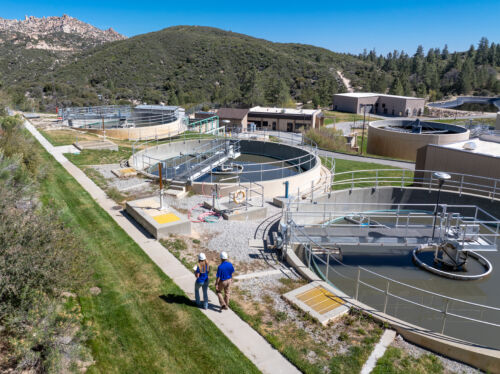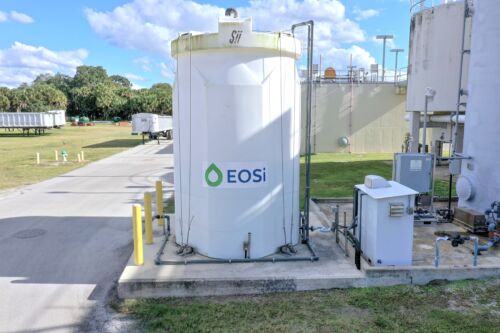How the Right BNR Carbon Source Supports Net Zero Emission Targets

Net Zero Emissions for Wastewater Treatment
Today’s wastewater treatment industry is actively adapting treatment processes to counter global warming and climate change, and plant operators are striving to reduce their facility’s contributions to rising levels of greenhouse gases (GHG) in the Earth’s atmosphere that trap and preventing heat from escaping back to space.
Plant operators are now moving beyond earlier “carbon neutral” strategies criticized for their heavy reliance on limited-scope reduction targets and the purchasing of carbon-credit offsets seen as “greenwashing.” Net Zero is the newer and far more ambitious and comprehensive industry target. Net Zero still requires offsetting GHG emissions, but is more focused on greatly reducing direct Scope 1 emissions, indirect Scope 2 emissions, and difficult-to-quantify Scope 3 emissions.
What does this mean for treatment-plant operators? For plants using supplemental carbon for biological nutrient removal, it means migrating to biogenic carbon sources that significantly minimize plant-controlled direct and indirect Scope 1/Scope 2 GHG emissions, and collaborating to reduce Scope 3 GHG emissions that do not result directly from wastewater-treatment (such as supply-chain activities).

MicroC® vs Methanol
Carbon dioxide emissions from supplemental carbon use for biological nutrient removal can make up as much as 80% of a wastewater treatment plant’s Scope 1 GHG emissions, and may even be responsible for up to 30% of a facility’s combined Scope 1 and Scope 2 emissions, potentially second only to purchased electrical power. Methanol, still used as a carbon source by older treatment plants, can potentially hike those Scope 1 and 2 GHG emissions to unacceptable levels for Net Zero targets.
In contrast, using biogenic carbon sources like EOSi’s MicroC® can potentially reduce or eliminate these Scope 1 and 2 GHG emissions. Potential trade-offs: some biogenic carbon sources will have higher yields than many of the typical fossil fuel-derived carbon sources, leading to increased solids production that may either offset or enhance the reduced Scope 1 and 2 emissions with changes to Scope 3 emissions. These outcomes depend heavily on the solids-handling methods of a given treatment facility.
EOSi recently conducted research focused on the global-warming potential of the two most widely used carbon sources for nutrient removal across North America: EOSi’s MicroC and methanol. The study compared different carbon sources in terms of CO2 equivalent emissions per unit of NO3 removal, and analyzed the impacts of variable dosing rates, solids generation and handling, and sensitivity to methods of solids handling employed.

Carbon Source Matters – MicroC® Means Lower Emissions
Analysis performed around six hypothetical treatment plant scenarios calculated carbon source dosing rates, biogenic and non-biogenic emissions associated with the carbon sources from the secondary process, and incremental observed-solids generation. Included were emissions from production of the carbon source, utilization of the carbon source in the anoxic zone, digestion of the incremental sludge generated upon utilization of the carbon source, generation of electricity and heat from the biogas produced (in some scenarios), transport and land application, landfill, or incineration of residual sludge.
The life-cycle results for the six scenarios analyzed revealed the cradle-to-grave emissions per unit of NOx removed with the MicroC® carbon sources were between 52% and 98% lower than those of methanol. The study also found that utilization of MicroC biogenic carbon sources reduced supplemental carbon source-related Scope 1 emissions for the wastewater treatment facility by a higher margin: nearly 100% in the scenarios analyzed, unless incinerated onsite.
Biogenic carbon sources like MicroC can demonstrably offer overall greenhouse gas reduction to wastewater treatment facilities under a variety of solids-handling scenarios. Despite potentially generating larger quantities of solids, relatively large anthropogenic Scope 1 GHG savings and possible Scope 2 savings for plants using combined heat and power units more than offset the additional emissions from the incremental solids generated. Further, MicroC supplemental carbon may help reduce overall plant emissions by enhancing denitrification COD/N and thereby reducing anoxic N2O emissions, enabling plants to simultaneously achieve cost-effective nutrient removal, GHG reduction, and Net Zero targets.